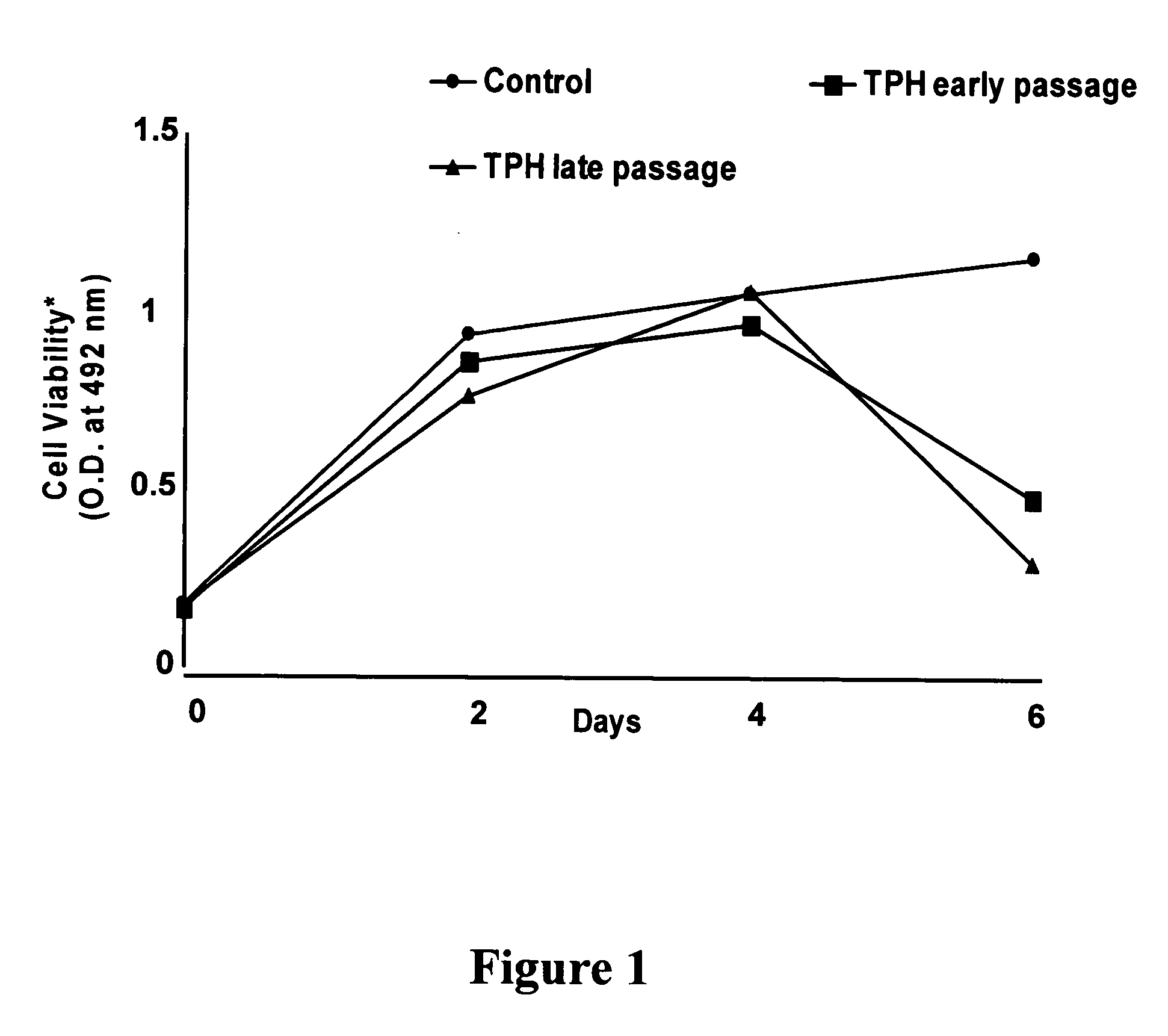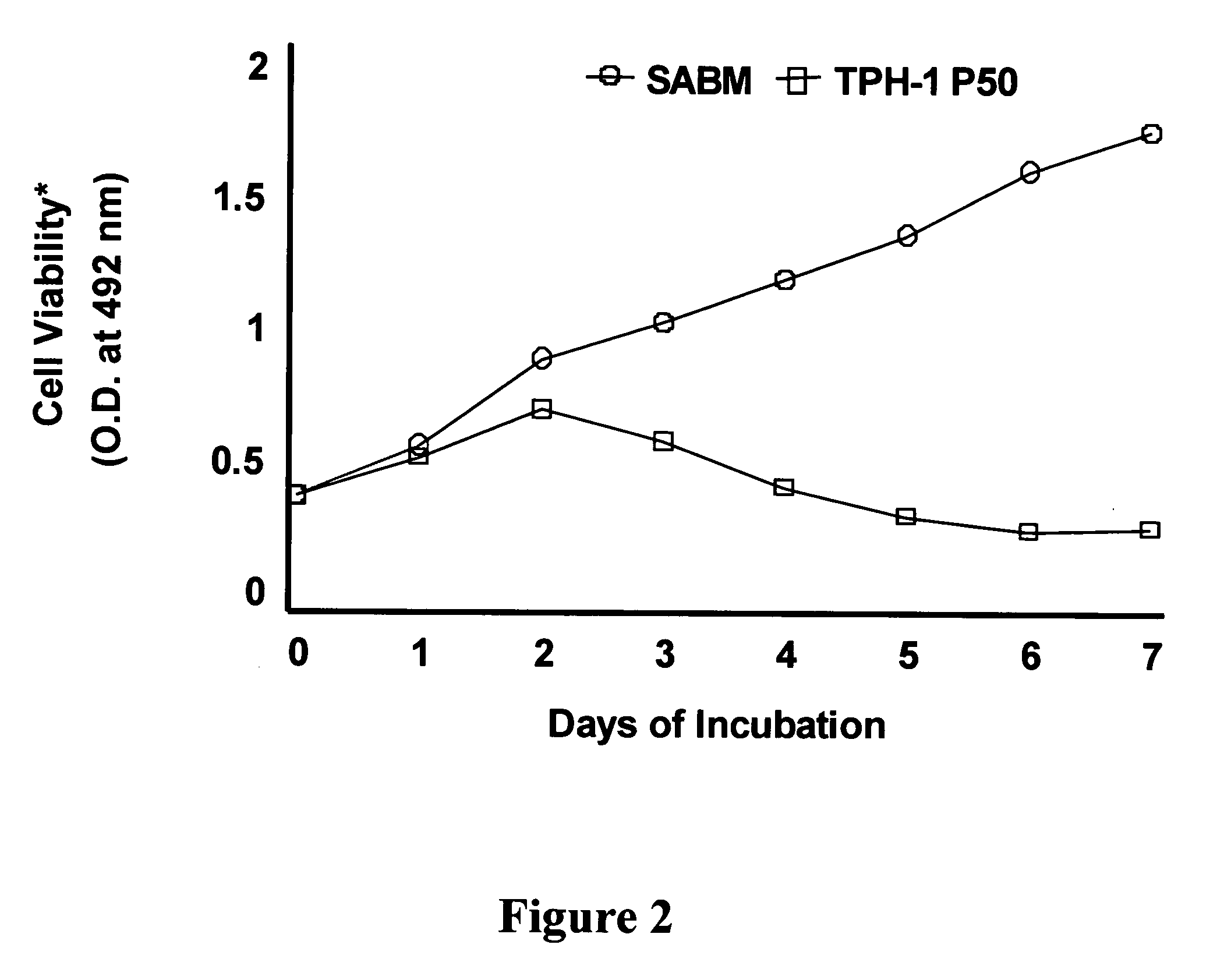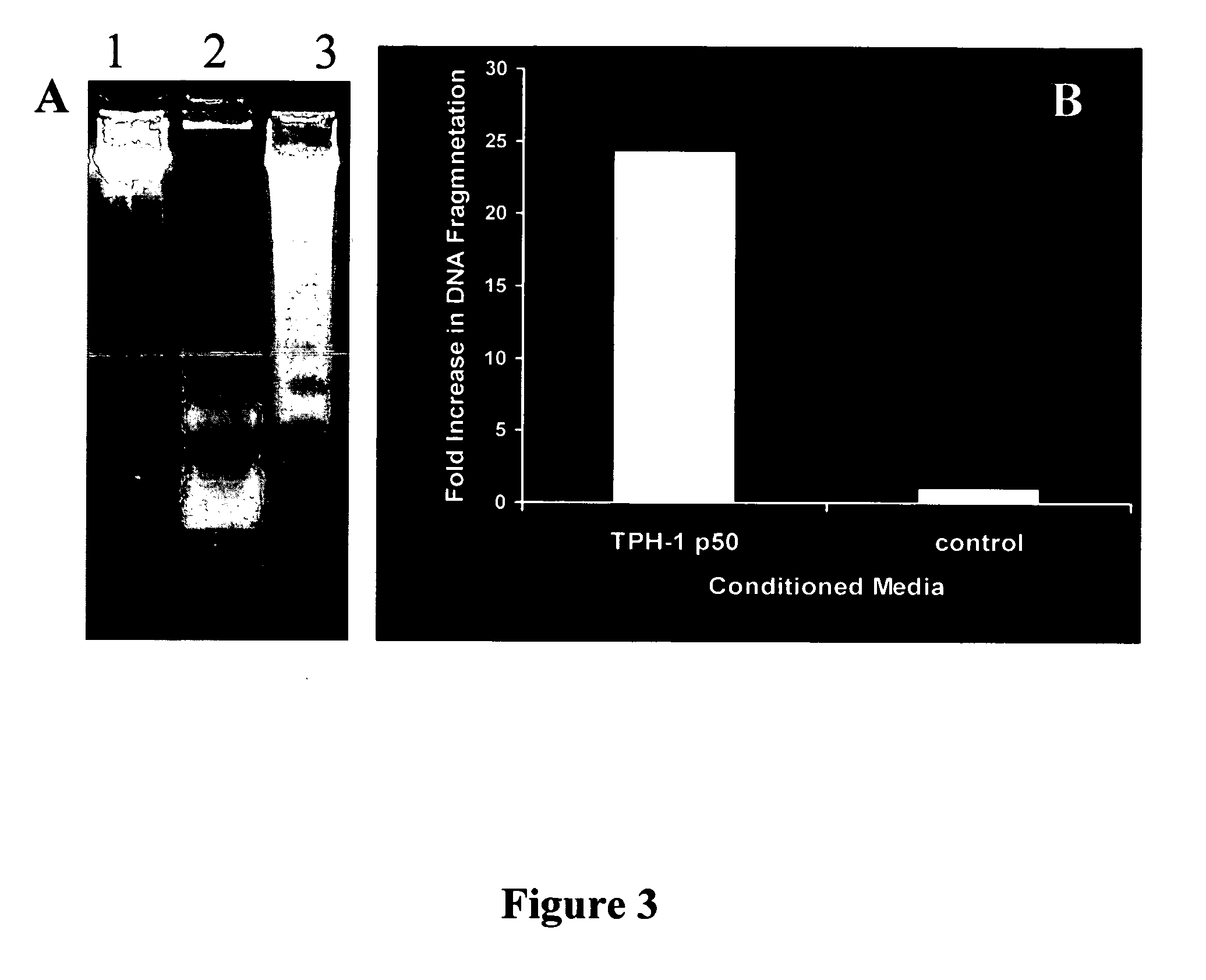Compositions and methods for inhibiting liver stellate cell growth
a technology of liver stellate cells and compounds, which is applied in the field of compounds and methods for killing liver stellate cells, can solve the problems of distortion of the liver structure, inability of natural immune responses to terminate hcv infection in most patients, and inability to achieve the effect of enhancing the cytotoxic
- Summary
- Abstract
- Description
- Claims
- Application Information
AI Technical Summary
Benefits of technology
Problems solved by technology
Method used
Image
Examples
example 1
Immortalized Hepatocytes Induce Stellate Cell Apoptosis
[0046] We have previously shown that hepatitis C virus (HCV) core protein immortalizes primary human hepatocytes (Ray et al., 2000; Basu et al., 2002). In this study, we investigated the role of the transfected primary hepatocytes (TPH) on regulation of hepatic stellate cell growth. Preferential growth of the immortalized hepatocytes (1H) was observed when co-cultured with an activated hepatic stellate cell (LX2) line. Further studies suggested that LX2 cells undergo apoptosis when grown with TPH cells in dual chambers or incubated with conditioned medium from TPH cells. However, LX2 cell death was not observed when incubated with conditioned media from a number of non-hepatic epithelial cells (HeLa, BHK, or MCF-7), indicating that TPH cells secrete a specific death factor. The effect of the conditioned media from TPH on LX2 cells was not due to FasL, TGF-beta, TRAIL, IL-7 or IL-8, as neutralizing antibodies to these cytokine g...
example 2
Methods of Immortalizing Hepatocytes
[0051] Methods of producing immortalized hepatocytes for use in producing the conditioned media of the instant invention are described in detail in Ray et al., 2000, and Basu et al., 2002, which are herein incorporated in their entirety by reference. An exemplary method is summarized below.
[0052] Cell growth regulatory potential of HCV core protein was investigated by introduction of the core genomic region into primary human hepatocytes, a natural host for virus replication and tropism (Ray et al., 2000). Interestingly, core transfected primary human hepatocytes (TPH) were immortalized and exhibited continuous growth for more than three years. In contrast, similar transfection with core deletion mutants (Core aa 26-85 and Core aa 80-150) or gene encoding nucleocapsid protein (NP) from an unrelated human parainfluenza type 3 virus (HPIV-3) as controls did not immortalize primary human hepatocytes. We have so far established immortalized hepatocy...
example 3
Induction of TRAIL-Mediated Apoptosis
[0058] Activated HSCs are central to the pathogenesis of liver fibrosis / cirrhosis, both as a source of fibrillar collagens that characterize fibrosis / cirrhosis and tissue inhibitors of matrix degrading metalloproteinases (TIMPs). Moreover, activated HSC apoptosis plays a critical role in the spontaneous recovery from biliary fibrosis (Issa et al; 2001). Both survival and apoptosis of HSC are regulated by growth factors expressed during fibrotic liver injury. We have previously shown that HCV core protein mediates immortalization of primary human hepatocytes, a natural host for virus replication and tropism (Ray et al 2000). In this study, we investigated the relationship between HCV core protein mediated immortalized human hepatocytes (IH) and activated HSC. To study the relationship between the IH and activated HSCs, we used a spontaneously immortalized human stellate cell line (LX2) and primary rat HSCs. These two different cells were co-cultu...
PUM
| Property | Measurement | Unit |
|---|---|---|
| pH | aaaaa | aaaaa |
| pH | aaaaa | aaaaa |
| mass spectrometric | aaaaa | aaaaa |
Abstract
Description
Claims
Application Information
 Login to View More
Login to View More - R&D Engineer
- R&D Manager
- IP Professional
- Industry Leading Data Capabilities
- Powerful AI technology
- Patent DNA Extraction
Browse by: Latest US Patents, China's latest patents, Technical Efficacy Thesaurus, Application Domain, Technology Topic, Popular Technical Reports.
© 2024 PatSnap. All rights reserved.Legal|Privacy policy|Modern Slavery Act Transparency Statement|Sitemap|About US| Contact US: help@patsnap.com










